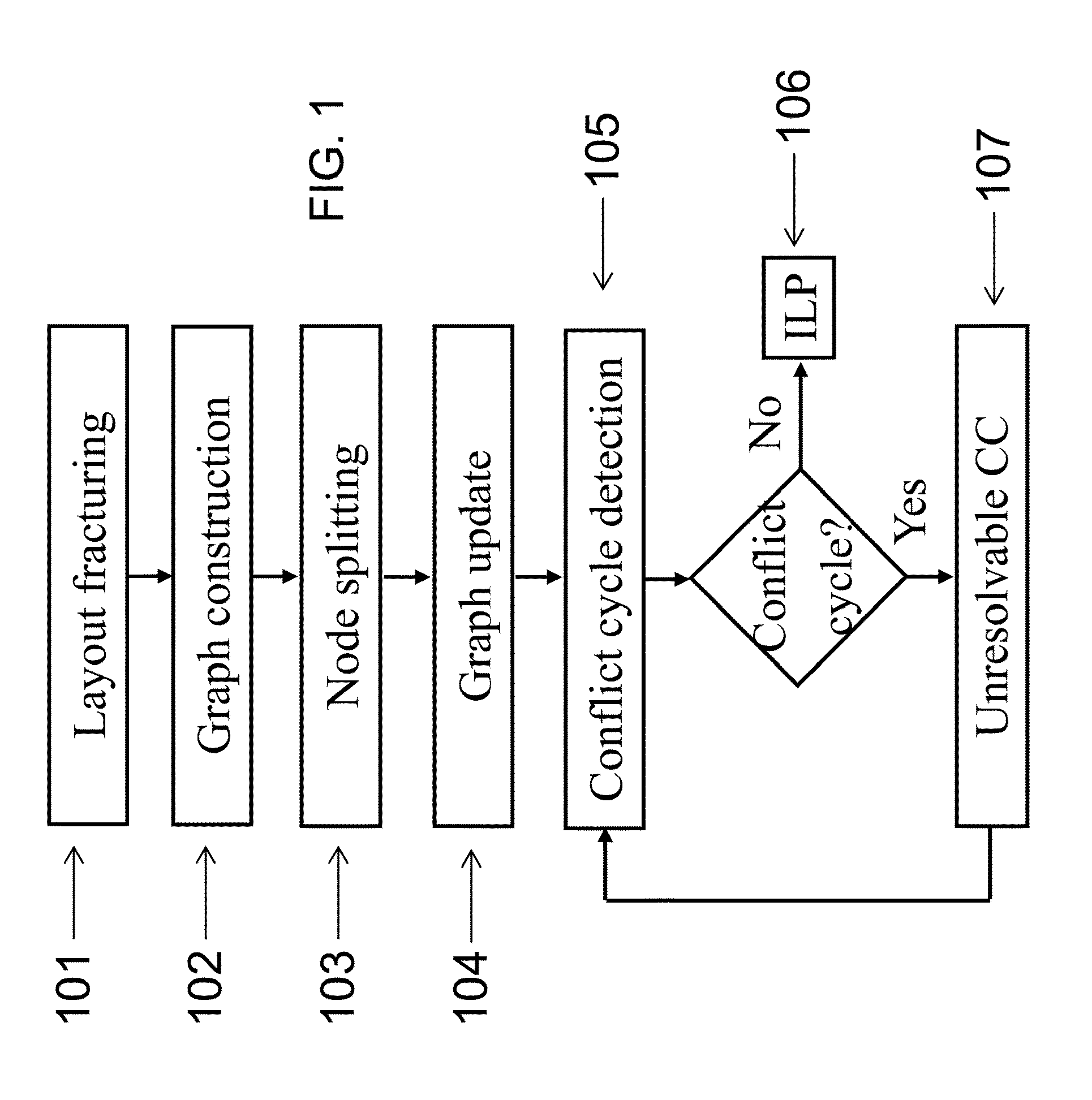Layout decomposition for double patterning lithography
a layout decomposition and patterning technology, applied in the field of integrated circuits and integrated circuit fabrication, can solve the problems of high output power source, high cost of conventional dpl, and many challenges of sub-wavelength lithography, and achieve the effect of reducing the total cost of layout decomposition, avoiding small jogging line-ends, and maximizing overlap at dividing points of polygons
- Summary
- Abstract
- Description
- Claims
- Application Information
AI Technical Summary
Benefits of technology
Problems solved by technology
Method used
Image
Examples
Embodiment Construction
[0025]The invention provides systems and methods for layout decomposition to produce exposure layouts that can be used to perform double patterning lithography (DPL). Preferred embodiment methods of the invention are executed by a computer and provide alternate methods for layout decomposition for double patterning lithography (DPL) using integer linear programming (ILP), phase conflict detection (PCD) and node election bipartization (NBD) formulations. Embodiments of the invention meet key optimization goals, which include reducing the total cost of layout decomposition, compared to prior conventional DPL techniques.
[0026]Embodiments of the invention provide integer linear programming (ILP) formulations, phase conflict detection (PCD) and node election bipartization (NBD) formulations for the optimization of DPL layout decomposition, with a process-aware cost function that avoids small jogging line-ends, and maximizes overlap at dividing points of polygons. The cost function can al...
PUM
 Login to View More
Login to View More Abstract
Description
Claims
Application Information
 Login to View More
Login to View More - R&D
- Intellectual Property
- Life Sciences
- Materials
- Tech Scout
- Unparalleled Data Quality
- Higher Quality Content
- 60% Fewer Hallucinations
Browse by: Latest US Patents, China's latest patents, Technical Efficacy Thesaurus, Application Domain, Technology Topic, Popular Technical Reports.
© 2025 PatSnap. All rights reserved.Legal|Privacy policy|Modern Slavery Act Transparency Statement|Sitemap|About US| Contact US: help@patsnap.com



